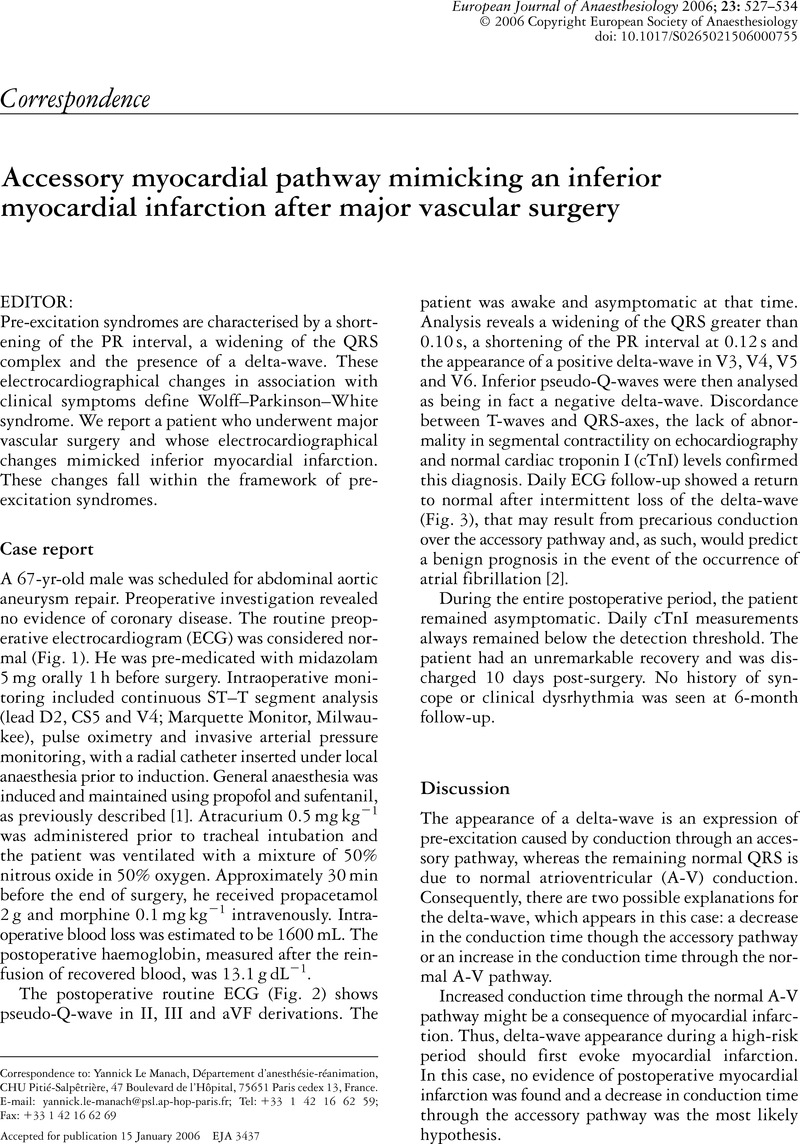No CrossRef data available.
Article contents
Lidocaine vs. mepivacaine for peribulbar anaesthesia in cataract surgery: a randomized double-blind study
Published online by Cambridge University Press: 04 May 2006
Abstract
An abstract is not available for this content so a preview has been provided. Please use the Get access link above for information on how to access this content.

- Type
- Correspondence
- Information
- Copyright
- © 2006 European Society of Anaesthesiology
References
Davis PL, O'Connor JP. Peribulbar block for cataract surgery: a prospective double-blind study of two local anesthetics. Can J Ophthalmol 1989; 24: 155–158.Google Scholar
Ripart J, Lefrant JY, L'Hermitte J. Caruncle single injection episcleral anesthesia for cataract surgery: mepivacaine versus a lidocaine–bupivacaine mixture. Anesth Analg 2000; 91: 107–109.Google Scholar
Davis DB, Mandel MR. Posterior peribulbar anesthesia: an alternative to retrobulbar anesthesia. J Cataract Refr Surg 1986; 12: 182–184.Google Scholar
Nicholson G, Sutton B, Hall GM. Comparison of 1% ropivacaine with 0.75% bupivacaine and 2% lidocaine for peribulbar anesthesia. Br J Anaesth 2000; 84: 89–91.Google Scholar
Mac Lure HA, Rubin AP. Comparison of 0.75% levobupivacaine with 0.75% racemic bupivacaine for peribulbar anesthesia. Anaesthesia 1998; 53: 1160–1164.Google Scholar
Maclean H, Burton T, Murray A. Patient comfort during cataract surgery with modified topical and peribulbar anesthesia. J Cataract Refr Surg 1997; 23: 277–283.Google Scholar


